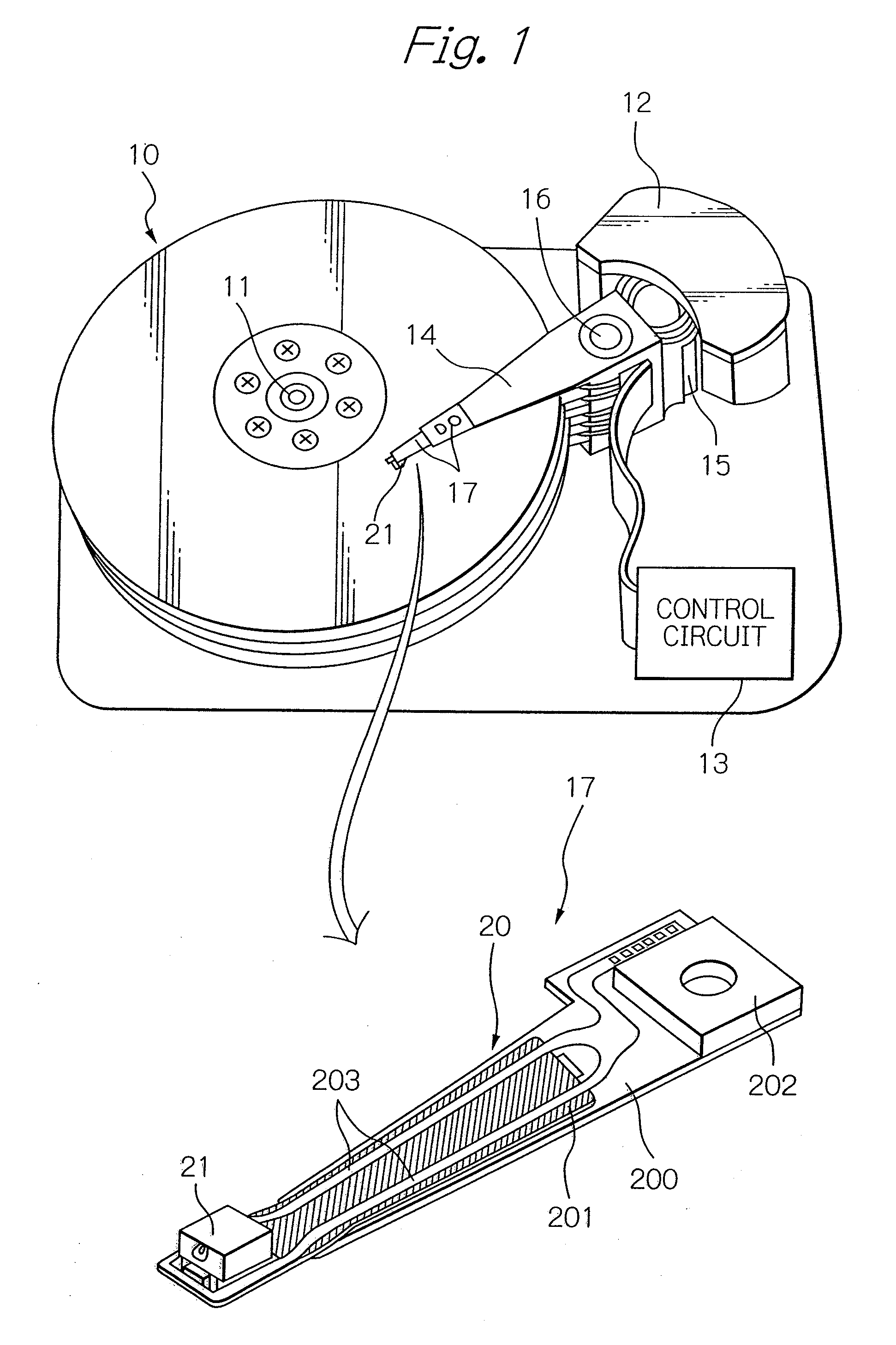Near-Field Light Transducer Comprising Propagation Edge With Predetermined Curvature Radius
a transducer and propagation edge technology, applied in the field of near-field light (nflight) transducers, can solve the problems of degradation in the thermal stability of the magnetization, defects especially in the vicinity of the propagation edge, so as to improve the light use efficiency, improve the propagation efficiency of surface plasmon propagation, and ensure the effect of thermally assisted magnetic recording
- Summary
- Abstract
- Description
- Claims
- Application Information
AI Technical Summary
Benefits of technology
Problems solved by technology
Method used
Image
Examples
Embodiment Construction
[0038]FIG. 12 shows a graph illustrating the relation between the additive concentration of Cu or Ru in each of Ag—Cu alloy and Ag—Ru alloy and the light use efficiency of the surface plasmon antenna formed of each of these alloys;
[0039]FIG. 13a shows a graph illustrating the relation between the additive concentration of Rh or Ir and the radius of crystal grains constituting each of Ag—Rh alloy and Ag—Ir alloy;
[0040]FIG. 13b shows a graph illustrating the relation between the additive concentration of Rh or Ir and the percent defective of cracking or chipping, in the surface plasmon antenna used in the practical examples shown in FIG. 13a; and
[0041]FIG. 14 shows a graph illustrating the relation between the additive concentration of Rh or Ir in each of Ag—Rh alloy and Ag—Ir alloy and the light use efficiency of the surface plasmon antenna formed of each of these alloys.
DESCRIPTION OF THE PREFERRED EMBODIMENTS
[0042]FIG. 1 shows a perspective view schematically illustrating a structu...
PUM
| Property | Measurement | Unit |
|---|---|---|
| curvature radius | aaaaa | aaaaa |
| curvature radius | aaaaa | aaaaa |
| radius | aaaaa | aaaaa |
Abstract
Description
Claims
Application Information
 Login to View More
Login to View More - R&D
- Intellectual Property
- Life Sciences
- Materials
- Tech Scout
- Unparalleled Data Quality
- Higher Quality Content
- 60% Fewer Hallucinations
Browse by: Latest US Patents, China's latest patents, Technical Efficacy Thesaurus, Application Domain, Technology Topic, Popular Technical Reports.
© 2025 PatSnap. All rights reserved.Legal|Privacy policy|Modern Slavery Act Transparency Statement|Sitemap|About US| Contact US: help@patsnap.com



